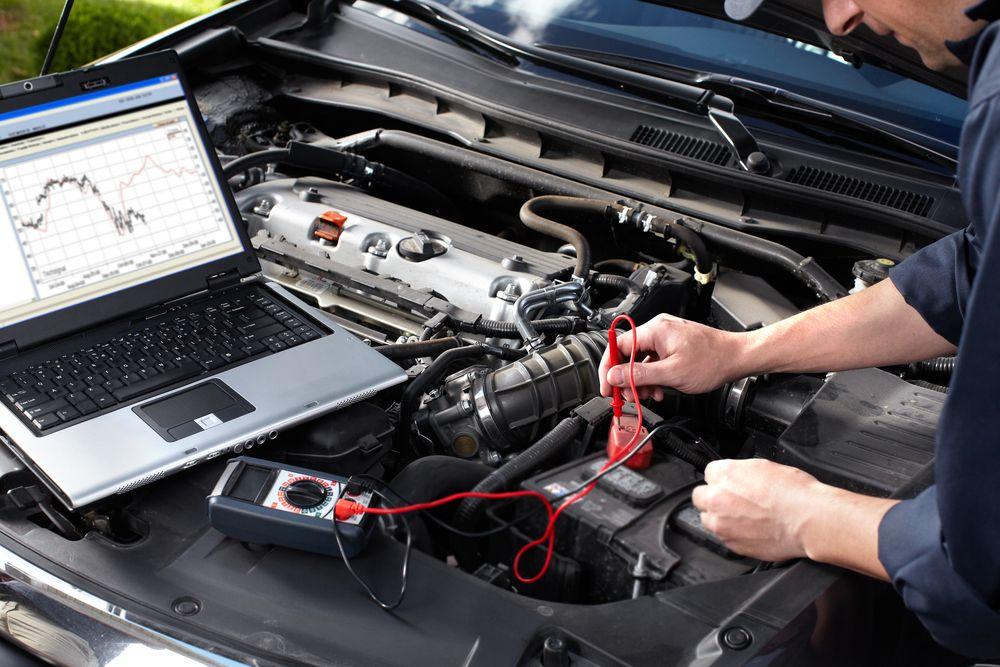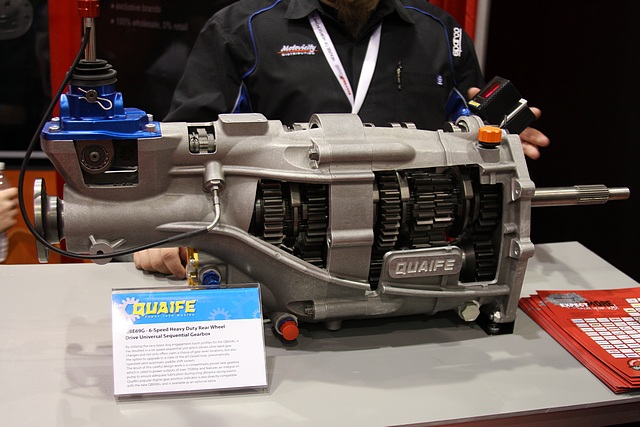Step by step repair guide on how to troubleshoot and repair automatic transmission problems. This repair guide pertains to most vehicles.
Transmission Not Changing Gears
- Basic Parts of a Transmission. While there are many, many little parts inside, your transmission is.
- If an automatic transmission has trouble shifting gears, it could be because the transmission fluid is low, the fluid is the wrong viscosity or the throttle cables need adjusting. If these factors are not the problem, then it is best to take the vehicle to a licensed mechanic for service.
Difficulty Scale: 4 of 10
Tools and Supplies Needed


- Flashlight
- Protective eyewear and gloves
- Code reader
- Shop towel
Diagnostic Procedure Before Repair
Step 1 - Clear all DTC's with a engine scan tool (diagnostic trouble codes.) Visit - Scan PCM
If your transmission is running low on transmission fluid, the first symptom is usually a hard shifting condition, meaning your car will jolt forward when it shifts. With enough fluid loss, your transmission will eventually be stuck in one gear. Transmission will not down shift during heavy acceleration On computer controlled transmissions, check for failed sensors or control units and repair or replace defective components. On vehicles with kick-down linkages or vacuum servos, check for proper linkage adjustment or leaking vacuum hoses or servo units. One main reason why the automatic transmission in your car may not be shifting smoothly is the ECM is going bad. It is best to get this checked out by an experienced auto mechanic technician who understands the electrical system. Other indicators include bad connections within, or worn out sensors and faulty solenoids.
Step 2 - Start the engine and observe the MIL, if it does not illuminate continue to next step (service engine soon or check engine light.)
Step 3 - Drive the vehicle while trying to maintain a constant throttle position as it accelerates up through all four gears. If the transmission is shifting properly, it should be in 4th gear by the time you reach 45 to 50 mph on level ground. Repeat this procedure from a standing start 3 to 5 times. Rescan the PCM for trouble codes, if none appear the problem could have been a onetime occurrence. If a trouble code has returned repair as needed and recheck system.
Problem Guide
Transmission Not Shifting Gears

Will not go into gear:
- Broken gear selector cable.
- Brake lock solenoid or brake light switch has failed not allowing the gear selector to move out of 'Park.'
- Excessively low transmission fluid (Note: If transmission is operated for an extended amount of time with a low fluid level the transmission might fail prematurely.)
- Shorted electrical component not allowing the PCM to control the transmission. Example: shorted fuse or VSS (vehicle speed sensor.)
- Flex plate (flywheel) is broken completely not transferring engine power to the transmission.
Goes into gear but fades out of gear or is slipping while driving:
- Transmission fluid is low.
- Transmission clutch discs or bands are worn out or burned.
- Faulty transmission shift solenoid.
Goes into gear but does not shift out of first gear:
- Blown fuse to the PCM controller
- Faulty vehicle speed sensor (VSS)
- Shorted second gear control solenoid
- Faulty transmission controller (PCM)
Tips and Fixes
- When the vehicle is cold or going around corners the transmission fades in and out of gear: In most cases this means the transmission fluid is low. The transmission will lose hydraulic pressure causing the transmission to drift in and out of gear. Check your transmission fluid when the car is on flat ground with the engine idling in park, (Some Chrysler products must be checked in neutral.)
- Transmission is shifting too late or not at all. On most cars the transmission is controlled by the PCM (powertrain control module) if the vehicle speed sensor fails the PCM has no input so the computer will not shift the transmission properly. The best way to check this sensor is to make sure the speedometer is operating correctly, if not replace the VSS and recheck.
- The transmission skips second gear, shifts from first gear to third gear and the 'service engine soon' or 'service engine soon' MIL is illuminated. Scan the computer to help locate the transmission control solenoid that is malfunctioning.
Fluid Level and Leaks

A common complaint with automatic transmissions is them leaking fluid. Leaks can occur from the output shaft seal, input shaft seal, pan gasket, fluid cooler or lines. When adding transmission fluid, do not overfill, doing so could cause the fluid to become aerated which will affect transmission operation.
If the fluid level is low with no visible leaks, check the radiator for fluid in the coolant. The cooler inside the radiator may be leaking and cross-contaminating the radiator coolant (the coolant will be milky pink.) Also check the condition of the fluid, some discoloration and darkening is normal as the fluid ages, but if the fluid is brown or has a burnt smell its badly overused and a transmission service is needed.
Most transmission problems can be prevented by changing the fluid and filter (if applicable) according to manufacturer specifications. In extreme conditions installing an aftermarket auxiliary cooler parallel can be installed furthering the cooling effect. This prevents fluid overheating on vehicles used for towing or performance applications.
Transmission Not Shifting Gears
Helpful Information
Automatic transmissions make specific noises when a malfunction occurs. An automatic transmission is a hydraulic pressure driven system that can make different noises than manual transmission problems. If the transmission filter becomes plugged due to debris, it can make a whirring noise. If the fluid level is low, you might hear a bubbling sound which is caused by the pump scavenging fluid inside the transmission pan. Most internal failures are due to bearing, clutch or hard part failure. When such a failure occurs the transmission can make a grinding, whirring sound or no noise at all. When a transmission has a major failure you might hear a loud pop which could mean a drive component inside the transmission has failed.
Best Practices
Transmission Not Shifting Into Overdrive
- Never allow little noises go unattended, a small noise can cause a transmission failure. Avoid overloading a vehicle or towing beyond capacity as this can cause premature failure.
- To prevent damage come to a complete stop before engaging park mode.
- Fault codes will be set when the transmission controller or PCM detects a malfunction. Codes are set by the computer when detecting malfunctions, such as a 2-3 shift solenoid that is not responding.
Transmission Not Shifting Into Overdrive
Terminator X Max. First item of interest is the handheld will show transmission is in 1st gear all the time and it will not change when shifting transmission. Second item is it will go in reverse, 1st, and 2nd gear in the drive position, but will not shift into 3rd or overdrive in the same position. I've tried shifting it manually into each gear and it has the same issue. The condition of the transmission is unknown because I pulled it out of a truck that was not running, so it could be the transmission itself, but I'd like to know is their anything I can check with the ECU to validate it's doing what it supposed to do to rule out being stupid on my part or something else.
